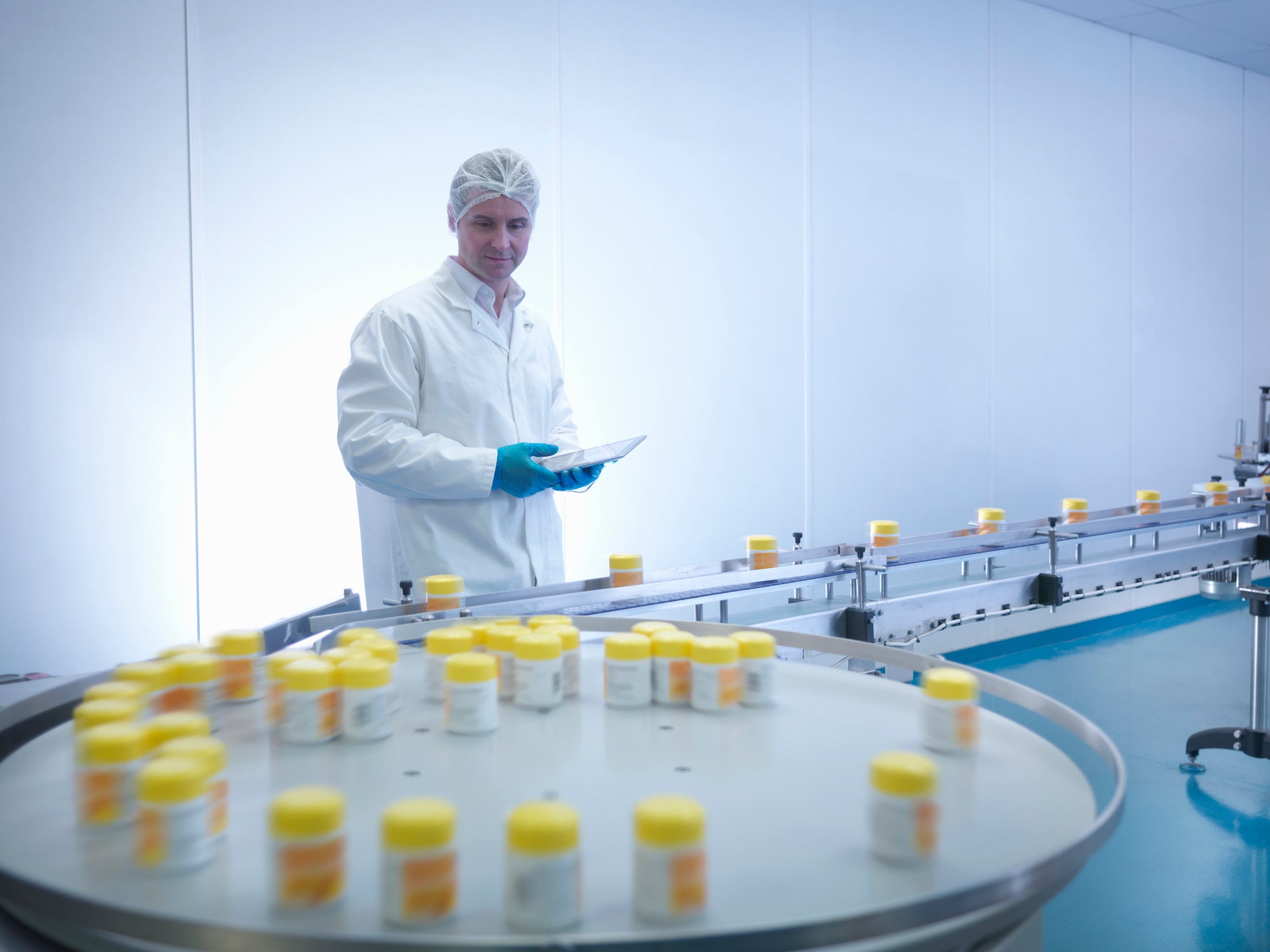
It’s the regulatory practice that no drug manufacturer can afford to ignore. The level of regulatory compliance with good manufacturing practice (GMP) guidelines in the production of medicines can be the difference between success and failure in securing marketing approval for any new drug, as well as ongoing certification for the safe production of drugs that are already on the market.
While inspectors are the on-site adjudicators of GMP compliance, and therefore may be figures of some concern for drugmakers and developers, it’s also important to remember that modern pharma inspection is centred around continual improvement as much as compliance and enforcement. Pharma manufacturers have a lot to gain from engaging constructively with the inspection process, as noted by a World Health Organization (WHO) guidance document from way back in the 1990s.
“Inspection should not be limited to compilation of an inventory of faults, irregularities and discrepancies,” the document noted. “Provided it is in keeping with national policy and does not breach understandings regarding confidentiality of information having commercial value, advice may be offered on how production and control procedures can be usefully upgraded…An inspection should be regarded as an opportunity to assist and motivate a manufacturer to comply with GMP and to correct any specific deficiencies.”
But how are inspections of the pharma manufacturing process carried out? The minutiae may vary from country to country, but the core principles are increasingly carried across borders in a globalised industry. This process is being accelerated by the regulatory harmonisation work that has been done by the likes of the WHO and the International Council for Harmonisation of Technical Requirements for Pharmaceuticals for Human Use (ICH), as well as the overseas inspection and training programmes that are maintained by major regulators such as the US Food and Drug Administration (FDA) and the European Medicines Agency (EMA).
Here are some of the core principles that guide global inspectors of pharma manufacturing.
Who are the inspectors?
Inspectors of GMP production facilities in the pharma industry are expected, as per WHO guidelines, to have previous experience and training in the manufacture or quality control of pharmaceutical products, as such graduate pharmacists, chemists and scientists with an industrial background in pharmaceutical production make for good candidates.
How well do you really know your competitors?
Access the most comprehensive Company Profiles on the market, powered by GlobalData. Save hours of research. Gain competitive edge.

Thank you!
Your download email will arrive shortly
Not ready to buy yet? Download a free sample
We are confident about the unique quality of our Company Profiles. However, we want you to make the most beneficial decision for your business, so we offer a free sample that you can download by submitting the below form
By GlobalDataInternational guidelines have recommended that in-post training for inspectors should involve accompanying experienced colleagues on site visits, as well as attending courses “on relevant subjects including modern pharmaceutical technology, microbiology, and the statistical aspects of quality control”. Guidelines also recommend that, for pre-approval inspections, the analyst responsible for the lab evaluation of a given product should also be involved in the inspection.
As well as maintaining a high level of training among staff of the inspectorate, efforts must be made to ensure the independence of inspectors when making determinations.
“[Inspectors] should not be under the control of the pharmaceutical industry and must be assessed for potential conflict of interest,” notes a WHO guidance document, updated as part of the 2020 technical report of the Expert Committee on Specifications for Pharmaceutical Preparations.
“Personnel and third-party declarations of conflict of interest should be maintained, reviewed periodically and updated where necessary. It should be ensured that any decision-making process remains with the inspectorate and is not influenced by any third party.”
When do inspections occur?
Pre-approval inspections are an important part of a clinical programme’s application review and approval process, but given the immense workload involved, such inspections aren’t generally carried out routinely, but reserved for safety-critical cases. These might include the evaluation of new chemical entities, products that are particularly complex or associated with previous recalls and serious adverse events, or applications from new manufacturers and those that have a history of GMP compliance issues.
In other cases, according to WHO guidance, regulators “will rely on the results of recent inspections of the applicant’s or manufacturer’s facilities for the production of dosage forms similar to that of the proposed product”.
Pre-approval inspections are recommended at the earliest possible opportunity in the application process to avoid delaying application reviews, although guidance does recognise that development and manufacturing processes may not be ready for inspection at this stage. Regulatory bodies are advised to coordinate with applicants on the exact timing of pre-approval inspections.
As for inspections outside of the approval process, these fall into several broad categories. Routine inspections are generally required for a new manufacturer, or a company that has requested renewal of its operating license. Other circumstances that may prompt routine inspections include the introduction of new product lines or manufacturing processes, a record of GMP non-compliance or an interval of three to five years since a facility’s last inspection.
Follow-up inspections can also be carried out, usually up to six months after an initial inspection, to ensure that actions to correct GMP violations have been taken. In the same vein, special inspections can also be carried out to investigate complaints, recalls or reports of adverse drug reactions in patients. These visits usually inspect specific products, product lines or manufacturing processes – from mixing and sterilisation to labelling – that are a cause for concern.
On the other side of the coin, ‘concise’ inspections can also be carried out for manufacturers with a consistent record of GMP and regulatory compliance. While regular inspections can last from a few days to a couple of weeks, concise inspections can be much faster as inspectors can save time by assessing a smaller number of GMP requirements, which serve as broader performance indicators.
Although any inspection may be carried out unannounced based on national policy, guidelines advise that concise, follow-up and special inspections should be unannounced.
Inspection conduct and quality management
Inspections generally aim to assess all aspects of pharma manufacturing operations for GMP compliance, from reception of starting materials to the shipping of finished products. Inspectors will also identify suppliers of starting materials and review the physical characteristics and specifications of the drug substance, including by collecting samples for analysis.
Assessors pay particular attention to the manufacturer’s stability testing programme and the documentation that goes with it, making sure that samples are regularly withdrawn from production lines to test product integrity. Other documents identified for close inspection include master formulae, test specifications, standard operating procedures and batch records.
Historic WHO inspection guidelines acknowledge the balance between adhering to a rigorous checklist of GMP requirements and carrying out inspections based on existing knowledge and experience. While checklists can be an important means of ensuring no items inadvertently go unchecked, over-reliance on such lists can lead to missing issues or vulnerabilities that are specific to the manufacturer or facility under inspection.
“For an experienced inspector, knowledge of the manufacturer’s weak points allied with intuition may serve better than a checklist,” noted one WHO guidance document.
After an inspection is completed, the subsequent report is often divided into four sections covering general information on the facility (often provided by the manufacturer and validated during the inspection), a description of the inspection, observations and conclusions, although the third and fourth parts may be combined. Inadequate procedures should be divided based on whether the inspector concludes that there is an underlying problem with standard operating procedures, or if the procedures are sufficient but not being properly followed by staff.
The overarching strategy and quality control processes used by inspectors should be encapsulated in a quality management system (QMS) similar to those used by manufacturers themselves. It’s the QMS that ensures that standards are clearly defined and applied consistently across an inspectorate’s activities. According to the most recent WHO guidelines, documentation related to the QMS and underlying legislation should be stored electronically, and the QMS regime should be reviewed regularly by senior management.
Of course, global guidelines don’t necessarily describe how inspections are actually carried out in the real world; only how they should be carried out in an ideal world. In reality, most regulators – even the best-funded ones – often struggle to keep up with demand for their inspection services, both at home and abroad, while major disruptions can throw a further spanner in the works.
The rapid emergence of the Covid-19 pandemic this year, for example, has thrown off the inspection schedules of regulators around the world. The challenges presented by Covid-19 will likely accelerate the development of remote site inspection technologies, and mutual recognition agreements between major regulators can help ease the burden of operating effective inspection regimes, which are ultimately a key safeguard for patient health.




